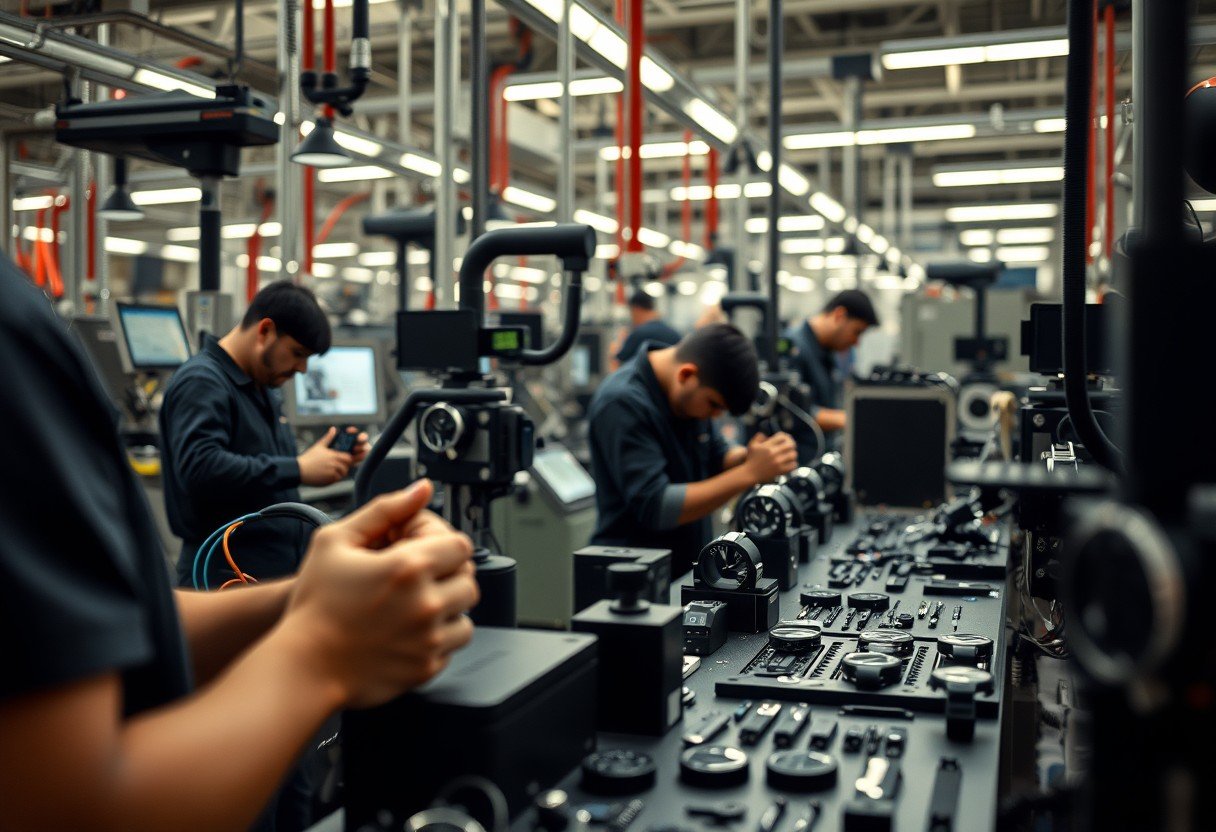Have you ever wondered where your high-tech Garmin watch comes from? These popular devices are primarily manufactured and assembled in facilities located in Taiwan and Vietnam. While research and design happen in the United States, the physical creation of the watch is an intricate global process. This approach allows Garmin to combine American innovation with efficient overseas production, ensuring you get a reliable and high-quality timepiece for all your adventures.
Garmin’s Primary Manufacturing Hubs in Asia
Garmin, a multinational corporation, has strategically placed its manufacturing and assembly operations in several key countries in Asia. This allows the company to leverage advanced technology, skilled labor, and efficient supply chains to produce its wide range of watches.
The main production facilities are located in Taiwan and Vietnam. Taiwan is known for its advanced technology sector and highly skilled workforce, making it an ideal location for manufacturing complex electronic components. Vietnam also plays a significant role in the production process, contributing to Garmin’s ability to meet global demand efficiently.
By focusing production in these regions, Garmin can optimize costs while maintaining strict control over the manufacturing process. This geographic distribution is a core part of their strategy to deliver innovative products to consumers worldwide without compromising on quality. The company ensures that every factory adheres to the same high standards, regardless of its location.
The Journey from Component to Final Product
Creating a Garmin watch involves a detailed journey that begins long before the final assembly. The process starts with sourcing the best possible materials from trusted suppliers all over the world. Garmin is very selective about its components to ensure every watch is durable and performs well.
These carefully chosen materials include things like premium metals for the casing, tough plastics, and sophisticated electronic parts for tracking and connectivity. Once sourced, the components are sent to Garmin’s main manufacturing facilities for production and assembly.
Key steps in the process include:
- Component Manufacturing: Individual parts like sensors, screens, and processors are created.
- Watch Assembly: Skilled workers and automated systems put all the components together in the main facilities in Taiwan and Vietnam.
- Quality Checks: The watches undergo rigorous testing at multiple stages to ensure they work perfectly.
This streamlined process, where manufacturing and assembly often happen in the same region, helps Garmin maintain excellent quality control from start to finish.
Quality Control is a Top Priority
Garmin has built its reputation on creating reliable and durable products, and this is achieved through strict quality control measures. From the moment raw materials arrive at the factory to the final packaging, every step is carefully monitored.
The company uses advanced technology and skilled personnel to inspect every component. These inspections are designed to catch any potential flaws before the watch ever reaches a consumer. Garmin’s testing procedures simulate real-world conditions to ensure your watch can handle tough environments and demanding activities. This includes tests for water resistance, durability, and the accuracy of its sensors.
Furthermore, Garmin’s products are designed to meet or exceed international certification standards, such as those set by ISO. This commitment guarantees that your device is not only effective but also safe to use, giving you peace of mind that you are investing in a high-quality product.
The Role of the USA in Garmin’s Operations
While the physical manufacturing and assembly of Garmin watches happen overseas, the United States plays a vital role in their creation. Garmin’s corporate headquarters is located in Olathe, Kansas, and this is the central hub for the company’s research and development (R&D) efforts.
This is where the innovative ideas for new watches and features are born. Teams of engineers and designers in the U.S. work on developing the cutting-edge technology that sets Garmin apart, from advanced GPS tracking to new health monitoring sensors. Essentially, the brains of the operation are in the USA, while the hands are in Asia.
This global model allows Garmin to excel in both innovation and production. The company can tap into the top engineering talent in the U.S. to design its products and then rely on the manufacturing expertise of its Asian facilities to build them efficiently and to a high standard.
| Region | Primary Role in Production |
|---|---|
| United States (Kansas) | Research, Development, and Design |
| Taiwan & Vietnam | Component Manufacturing and Final Assembly |
| Global | Sourcing of Raw Materials and Distribution |
How Technology Shapes Garmin’s Production
Technology is at the heart of not only Garmin’s products but also its manufacturing process. The company incorporates advanced machinery and automation to improve the quality and efficiency of its assembly lines.
Robotics play a crucial part in the assembly process, handling tasks that require extreme precision, like placing tiny electronic components. This use of automation helps minimize human error and speeds up production, ensuring that watches are built consistently and under optimal conditions.
Smart sensors and data analytics are also used throughout the factory floor. These systems monitor the production process in real-time, allowing Garmin to identify and resolve any issues quickly. This tech-driven approach to manufacturing ensures that every watch meets the company’s high standards for performance and reliability.
What This Global Strategy Means for You
Garmin’s global manufacturing strategy directly impacts the watch on your wrist. By producing watches in locations with lower production costs, Garmin can invest more into research and development, packing more features and technology into its products at a competitive price.
This approach ensures you receive a reliable product. Because Garmin controls its own factories, it can enforce strict quality standards consistently across all its product lines. Whether you buy an entry-level fitness tracker or a high-end multisport watch, you can be confident it has passed the same rigorous quality checks.
Ultimately, understanding where your Garmin watch is made gives you insight into the brand’s commitment to quality. The combination of U.S.-based design and Asian manufacturing allows you to get a product that is both innovative and built to last, providing excellent value for your investment.
Frequently Asked Questions
Where are most Garmin watches made?
Garmin watches are primarily manufactured and assembled in the company’s facilities in Taiwan and Vietnam. These locations are hubs for advanced technology and skilled labor, allowing for high-quality production.
Are any Garmin watches made in the USA?
While Garmin is an American company with headquarters in Kansas, the physical manufacturing and assembly of its watches are done overseas. However, crucial research, design, and development for the watches happen in the United States.
How does Garmin ensure good quality from its overseas factories?
Garmin maintains very strict quality control standards across all its factories, regardless of location. They use multi-stage inspections, rigorous testing that simulates real-world use, and adhere to international quality certifications to ensure every product is reliable.
Does the manufacturing location affect the price of a Garmin watch?
Yes, Garmin’s strategy of manufacturing in Asia helps manage production costs. This allows the company to offer a wide range of watches at different price points, from affordable models to premium ones with advanced features, while maintaining profitability.
Are the materials for Garmin watches sourced from one place?
No, Garmin sources high-quality components and materials from trusted suppliers around the globe. This ensures they use the best available parts for durability and performance, such as premium metals, durable plastics, and advanced electronic sensors.









Leave a Comment